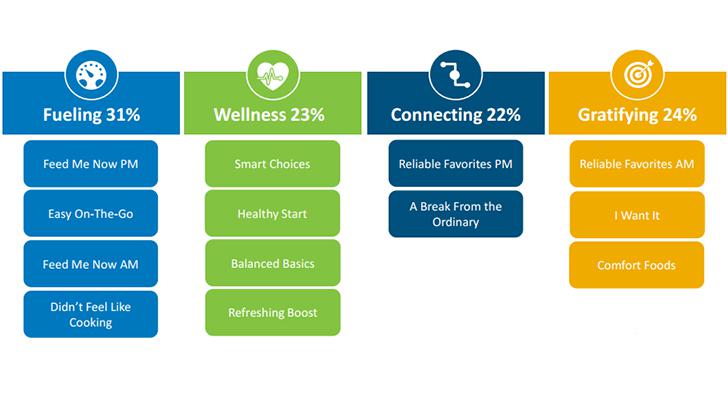Foodservice retailers can grow by understanding and leveraging them.
Angela Hanson
March 13, 2017
Convenience Store News
NATIONAL REPORT — In the current foodservice environment, it’s become harder and harder to achieve growth. But foodservice operators can still grow by understanding and leveraging consumer need states.
At the highest level, four fundamental macro needs drive all consumption, according to a March 9 webinar, “Need States Worth Knowing to Get Your Business Growing,” presented by The NPD Group. Presenters for the webinar were NPD’s Diane Tielbur, president, food and beverage, and Susan Schwallie, executive director, food and beverage.
The four macro needs are:
- Fueling (31 percent)
- Wellness (23 percent)
- Connecting (22 percent)
- Gratifying (24 percent)
These fundamental needs can then be broken down into more specific behaviors called need states. Examples of need states include “easy on-the-go” and “didn’t feel like cooking” under fueling. Meanwhile, need states under gratifying include “comfort foods” and “reliable favorites a.m.”
Consumer needs change throughout the day, but NPD’s research reveals underlying patterns. For example, the afternoon snack is the only eating occasion to frequently include all macro needs and their included need states. Conversely, the evening snack does not include fuel need states because it comes at the end of the day when fuel has been spent, and breakfast does not include the connecting need states because “breakfast is a very solo occasion,” Tielbur explained.
Notably, these macro need patterns are similar regardless of whether they apply to away-from-home or in-home/carried-out eating occasions. Only the connecting need states indexed significantly higher away-from-home.
The webinar also included case study examples of what the need states mean. The fueling/easy on-the-go need state calls for food that will not slow the consumer down and tide them over until the next meal. Accordingly, handheld and low/no-prep foods are best. The top foods for this need state are sandwiches, fruit, cold cereal, bars, and chips (corn, potato or tortilla). Other suitable foods include yogurt, nuts, seeds, crackers and toaster pastries.
Once foodservice operators understand consumers’ macro needs and need states, and the aspects of the foods most suitable for consumers in those need states, they can identify the need states that are most important to their most important consumer segments, and then size and prioritize opportunities based on them.
Subscribe to our free mailing list and always be the first to receive the latest news and updates.

